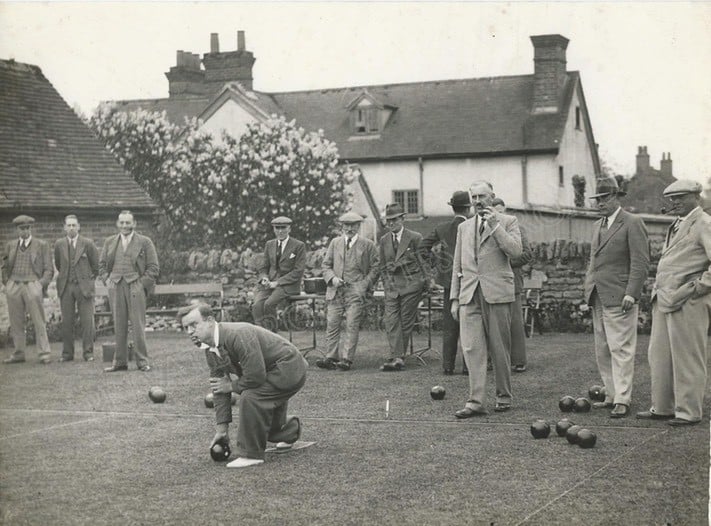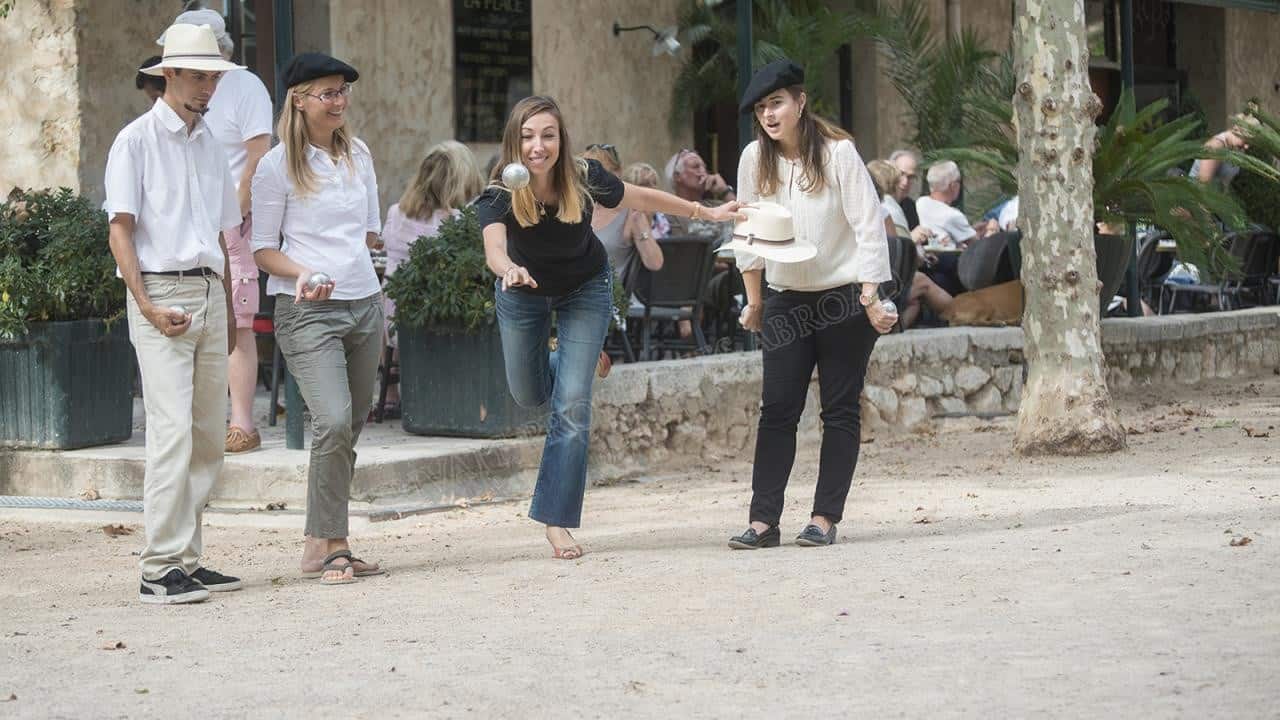
“Boules” is a general term that covers many different types of ball games – in France “boules” is often used to refer to petanque.
In the United States, bocce is played by many more people than petanque, so people are more familiar with it. When someone sees us playing petanque, the second question they usually ask (after: “What is that game?”) is: “What’s the difference between petanque and bocce?”
The two games are related. Bocce is Italian. Petanque is French. Some people think of petanque as “French bocce”.
There are differences in the equipment used, and in the way the games are played.
Petanque balls are hollow and made out of steel. Bocce balls are solid and made out of wood. Well… originally bocce balls were made of wood. Today they are typically made out of a hard epoxy resin, i.e. hard plastic.
Petanque balls are smaller than bocce balls, and, because they are hollow, are lighter than bocce balls. Petanque balls are about the size of an orange. Bocce balls are about the size of a grapefruit.
In bocce, the ball is rolled with an “open” hand. At the moment that the ball leaves the hand, the palm is up and the ball rolls off of the fingers onto the court. In petanque, the ball is thrown “back handed”. At the moment that the ball leaves the hand, the back of the hand is up, and the fingers are curled around the ball, holding it, then releasing it.

In petanque, balls are basically thrown. Bocce on the other hand — where the balls are bigger and heavier and the court is longer — has evolved into a game in which the balls are rolled rather than thrown.
It is possible to play one kind of bocce on a natural area (e.g. a lawn or grassy field). However, bocce is typically played on bocce court. A bocce court is rectangular and fairly long, with specially-marked areas in which the thrower must stand, the pallino (jack) must be thrown, and so forth. A petanque “court” (a terrain) is typically much shorter than a bocce court, and there are no marked areas — the throwing circle is moveable and can be placed anywhere on the terrain.
Because bocce is a rolling game — a bowling game, actually — it must be played on a relatively flat, smooth surface. Petanque, on the other hand, can be played almost anywhere, even on fairly rough ground. Gravel parking lots and park paths can make excellent petanque playing grounds.
The sides of bocce courts are typically enclosed by side and back boards, and play typically includes rolling (or bouncing) the ball along (or off of) the boards. On a petanque court, the out-of-bounds lines are traditionally indicated by strings laid out across the natural terrain. When petanque courts are enclosed by sideboards, the sideboards are out-of-bounds.
Because bocce needs a big, flat, smooth playing surface, a bocce court is usually much more expensive to build than a petanque court. And a bocce court requires much more regular, ongoing maintence to stay playable. All of this affects the “bottom line” — a bocce court is much more expensive to build and to maintain than a petanque court. This cost is something that public officials must consider when deciding whether or not to install a bocce or petanque court in a public park.
Finally, we should note that the rules of petanque are much more standardized than the rules of bocce. There are many variants of bocce — you could almost say that the term “bocce” covers a number of different games. There are two main variants of bocce — volo and raffa. In the USA, when people say “bocce” they are generally referring to raffa.
(via Quora: https://www.quora.com/What-is-the-difference-between-p%C3%A9tanque-boules-and-bocce)
Photos Anthony Singleton and https://www.saint-pauldevence.com/en/loisirs/